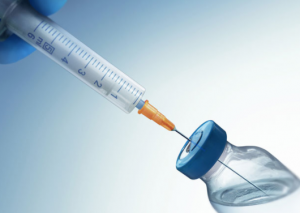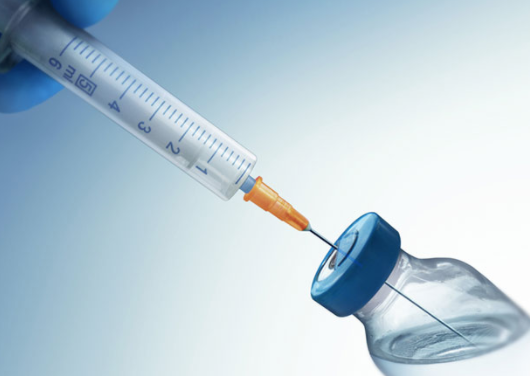In this series, we are highlighting some of our founder, Dr. Yelena Sheptovitsky’s, favorite manuscripts, publications, and news pieces all relating to the world of protein expression, life science, and CRO’s.
Today we look at the author manuscript from “Antibody Phage Display: Technique and Applications” by Christoph M. Hammers and John R. Stanley Department of Dermatology, University of Pennsylvania, Philadelphia, Pennsylvania, USA

INTRODUCTION
The production of human monoclonal mAbs for research and clinical use is closely related to the development of phage display technology, initially described by Smith in 1985 and further developed by other groups (e.g., Winter, McCafferty, Lerner, Barbas). Antibody phage display (APD) is based on genetic engineering of bacteriophages (viruses that infect bacteria) and repeated rounds of antigen-guided selection and phage propagation (Barbas, 2001). This technique allows in vitro selection of mAbs of virtually any specificity, greatly facilitating recombinant production of reagents for use in research and clinical diagnostics, as well as for pharmaceuticals for therapeutic use in humans (e.g., adalimumab, the first fully human APD-derived mAb) (Lee et al., 2007).
Because of a physical connection established between the antibody fragment on the outside and the genetic information encoding the displayed protein within the phage, APD also allows comprehensive studies of genetics and function of antigen-specific mAbs. These characteristics make APD a powerful tool to better understand immunological processes and human diseases that involve formation of (auto-)antibodies against defined (self-)antigens.
Areas that stand to be mentioned:
FINDING THE NEEDLE(S) IN THE HAYSTAC K: SELECTION BY PANNING
Diverse APD libraries are produced from ~108 independent E. coli transformants infected with helper phage. A library is screened for phage binding to an antigen through its expressed surface mAb by a technique called (bio-)panning. Cyclic panning allows for pulling out potentially very rare antigen-binding clones and consists of multiple rounds of phage binding to antigen (immobilized on ELISA plates or in solution on cell surfaces), washing, elution, and reamplification of the phage binders in E. coli (Figure 1a). During each round, specific binders are selected out from the pool by washing away non-binders and selectively eluting binding phage clones. After three or four rounds, highly specific binding of phage clones through their surface mAb is characteristic for directed selection on immobilized antigen. For panning on eukaryotic cell surfaces, more rounds of panning are usually needed, and more sophisticated protocols involving cell-sorting techniques have been published (Barbas, 2001). Of note, it is also possible to perform double recognition panning to select for bispecific mAbs (i.e., mAbs that recognize two antigens), as demonstrated in a patient with active mucocutaneous pemphigus vulgaris (PV) and serum antibody reactivity against desmoglein (Dsg) 3 and Dsg1, yielding scFv specific for both Dsg3 and Dsg1 (Payne et al., 2005).
FUNCTIONAL AND GENETIC ANALYSIS OF SELECTED MABs
After cyclic panning, the resultant (polyclonal) phage pools (i.e., a mixture of all the phages that bind to the antigen chosen) are tested by phage ELISA, in which the phage pool is incubated on an antigen-coated plate and then, after being washed, developed with an enzyme-conjugated anti-phage antibody directed against the major capsid protein and a chromogenic substrate specific for the enzyme chosen. If these pools bind the desired antigen (compared with control nonpanned phage libraries), the enzyme renders a change in color, indicating enrichment of phage binding of the specific antigen. In that case, E. coli infected with polyclonal phage is plated out and individual colonies are picked and expanded for monoclonal phage production. These are each tested again by phage ELISA to confirm antigen binding. The phage display vector, isolated from each clone, is then subjected to sequencing to determine the nucleotide sequence of VL and VH encoding the mAb that bound to the antigen. Furthermore, soluble scFv (or Fab) from clones of interest can easily be produced in bacteria that have been transformed with the phage display vector of interest. These mAb are then purified by metal chelation (e.g., through polyhistidine) or affinity purification (e.g., through a HA tag). To further analyze these soluble mAbs, a vast array of methods exists (Figure 1a). Obtained nucleotide sequences can be analyzed and grouped (e.g., by heavy- or light-chain gene usage and shared “finger-prints,” known as complementarity-determining region 3, indicating common B-cell clonal origin) with tools available online (e.g., VBASE2 and IMGT/V-QUEST).
LIMITATIONS AND PECULIARITIES
Compared to other methods used to dissect human immune responses (Table 1), APD offers sufficient depth of coverage to find antigen-specific mAbs even if they are rare in the ab- coding repertoire of circulating cells. The relative ease of constructing and screening antibody libraries comes from many well-established published protocols, and there are various easily accessible systems that facilitate production of soluble mAbs. Still, there are limitations to APD. One example is that pairing of VH and VL chains during phage display library construction may not represent the in vivo antibody pairing in patients. However, scFvs derived from APD bind the same epitopes on Dsg as polyclonal patient IgGs do (Figure 3), and some data indicate that in both heterohybridoma and APD the same genes for VH and VL are detected (unpublished observation), suggesting that the mAbs derived from APD accurately represent the antibodies in patients. A second caveat is that APD libraries may not fully represent all antibodies, because not all phage clones of a given library will display a protein because of inherent toxicity or interference with phage assembly. A third issue is that clones of interest may be missed as a result of poor recovery of RNA from cells or from loss of DNA during library construction, which requires repetitive gel purifications. Finally, undersized sampling of monoclonals after panning may result in the loss of some relevant clones. However, even given these limitations, APD—by virtue of its ability to screen up to 1012 phages to select those with antigen binding—is thought to be much more likely to detect relevant antibodies than are cell-based methods, whose numbers are much more limited. Combination of APD with other established high- throughput methods such as next-generation sequencing and/or proteomics may offer the most powerful approach for future molecular deciphering of antigen-specific serum responses in disease and health (Cheung et al., 2012; DeKosky et al., 2013; Wine et al., 2013).
To read the full manuscript, click here.
ARVYS Proteins, Inc. is a leader in the space of Antibody Development & Production. From generation of antigen to characterization of antibodies ARVYS Proteins provides protein science services for critical projects.




